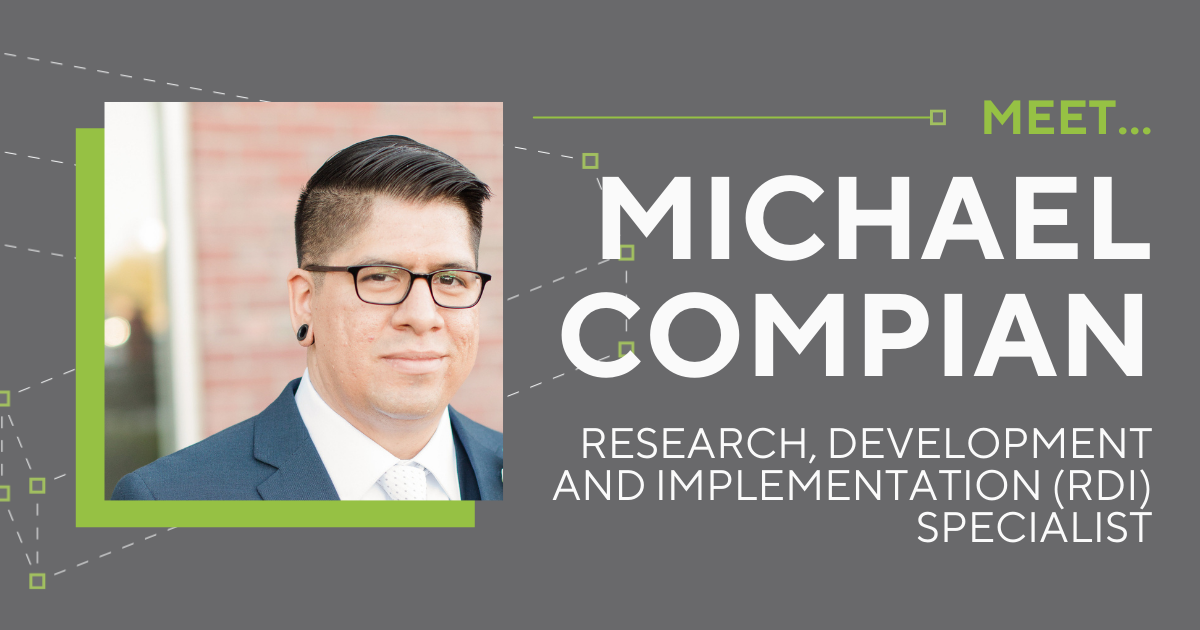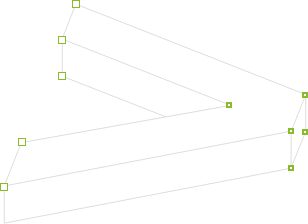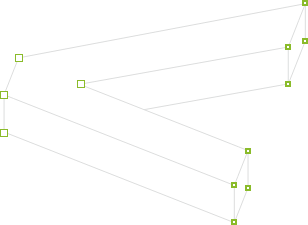
Michael Compian is a techie at heart. Growing up, he was always intrigued by tech and went on to study it in college. And, even in his spare time, he can usually be found tinkering with 3D printing technology––when he’s not taking care of his two young kids, that is. Though Michael saw a future for himself in technology, he didn’t necessarily plan on getting into the construction industry. But, the opportunity called, so he answered.
Still, while ZELUS works with owners, contractors, architects and project managers, as Michael describes it, they’re really more of a technology company that services the construction industry. This has translated to a dynamic and ever-evolving role for Michael as a research, development, and implementation (RDI) specialist. In fact, being able to learn about and figure out how to use new, innovative technologies, as well as problem solve for fellow team members is what he loves most about his role.
Read on for more about Michael and what technology he’s geeking out over currently.
What’s your role at ZELUS?
My job title is research, development and implementation (RDI) specialist. I'm part of the technology group and my focus is primarily on our enterprise systems––our ERPs, CRMs, file storage for projects, and all other platforms we use on a day-to-day basis.
What do you enjoy most about your role?
Being part of the research and development for the company, I get to work with nearly everyone, because everyone has challenges that need to be solved. It keeps things interesting. There’s a lot of variety because each challenge involves a different platform and has a different end goal for different processes. So, it never gets stale. It keeps us [the R&D team] on our toes and keeps pushing us to grow as a group.
What drew you to this role?
Initially, I started as a data processor in our existing conditions department at ZELUS. Having done some 3d modeling in college, it was something I was interested in, and I began to learn more about some of the software we use internally. Then I heard we were creating an R&D team, and asked to learn more. I thought it could be a good fit because my degree kind of made me a “jack-of-all-trades” with regard to technology. That knowledge across several areas could be used to help build varied solutions for the company.
What’s one of the most valuable things you’ve learned during your time at ZELUS?
Don't be afraid to ask questions and don't be afraid to say, “I don't know.” In a lot of other places, I feel like there's pressure to have all the answers. But at ZELUS, if you don't know, they want you to say so, but then follow through to find the solution. It really alleviates some of the pressure during meetings that's often caused by unreasonable expectations to have all the answers. You’re not going to have the knowledge for every different situation or scenario. Being able to say, “I don't know, but I'll come back with the answer,” has been really beneficial for all of us.
What technology are you currently geeking out over?
Several of our data-driven tools have been interesting to see. Recently we started using business intelligence platforms, so we’ve been able to migrate away from data being stored in various Excel spreadsheets, which became cumbersome when trying to create reports based on that information. Being able to see some of the platforms we use now and how user-friendly they are when trying to do things like visualize data or create automated processes to reduce administrative tasks––being able to discover those new applications and then share them with the team is pretty amazing.
For instance, we developed a process that enables the team to read data directly from all of our platforms and integrate that information together to use it in insightful ways rather than trying to piece it all together from various places.
What’s one project you’re most proud?
We scanned and modeled a 747 that was a lot of fun to work on. Someone else on the team created some of the parts for it, but I was able to bring it into this other modeling software that we don't typically use to cut out all the doors and windows, and stretch it to make it match the point cloud. After they moved the plane, it shifted a little bit, so we had to re-stretch it back to match the point cloud. It turned out really good in the end and it was a unique use case for our services, because we don’t normally scan planes. We're typically doing buildings, so it was definitely an interesting one to work on.
What’s one goal you are aiming to achieve in the next year?
I'm currently working on a process that bridges the information gap between our business development team and our operations team. So right now there's a lot of manual data entry, folder creation, project set up, etc. So, what I'm hoping to do within the next year is to create an automated system that starts from our CRM and then will transfer data in a useful, trackable way to our file system and then use that to trigger project creation in the different platforms we use for resource management, timekeeping, etc.
The goal is to help everyone save time and create a traceable, start-to-finish pipeline from a sales opportunity all the way down to the end of the project.


